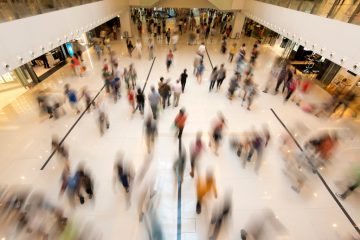The future of retail merges the physical and digital worlds

The digitization of retail is breaking down barriers and digital technology has moved beyond the screens of our devices to infuse the physical experience. Today’s consumers are looking for new in-store experiences that combine the best of both worlds.
But how do we find the optimum balance so that digital is integrated into the physical experience without being intrusive?
The answer lies in promoting personalization at both the customer and store level.
We already know that, when opening a new physical point of sale, the three rules are: location, location and location. The same applies when it comes to designing the experience.
Just as we adapt the architecture of the store interior to the store format, we must also do the same with the customer experience. In smaller stores a virtual fitting room can feel invasive or, in larger stores, a single self-checkout point will not be enough.
Some retailers have already launched their own proposals for blending the physical with the digital.
At Toys “R” Us Iberia it is “forbidden not to touch” and customer interaction with products is encouraged in a new store concept that, in turn, combines more digital experiences. These include digital navigation through the store assortment, online ordering, self-payment and even interactive fitting rooms.
In Madrid, WOW and Zara emphasize the phygital experience with their last two store openings, with appointment booking and technology-led design concepts whose clear intention is to merge the physical experience with the digital one.
Perhaps one of the biggest challenges for a frictionless integration is when it comes to organizing the operational side–preparation of orders, collection points for online orders or mailboxes for automatic returns–such that they do not affect the brand image or occupy too large a part of the space.
In the future, we will see more dynamic stores with spaces that can be redesigned and adapted quickly to accommodate changing user needs. A good example is Camp, the US toy chain, whose stores have areas adapted for the organization of events or rest areas where you can have a coffee, so fostering a sense of belonging and encouraging the creation of communities.
Perhaps it has been the arrival of the Metaverse that has put the wind up traditional retailing, but some experts are already predicting that the most successful retailers in the future will end up hiring specialists in video game design and spatial computing to design their stores.
It seems clear that the future of retail lies in creating stores that are more versatile than ever.
In the last two years we have seen the store reinvent itself as a distribution center to support the supply chain and now, as a space to enjoy beyond shopping. A place where brands can convey their values to their customers, influencing customer loyalty and extending the lifetime value of each customer.



